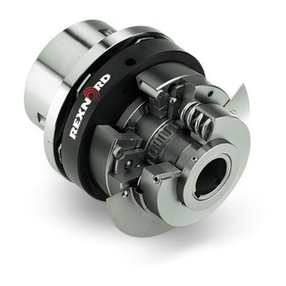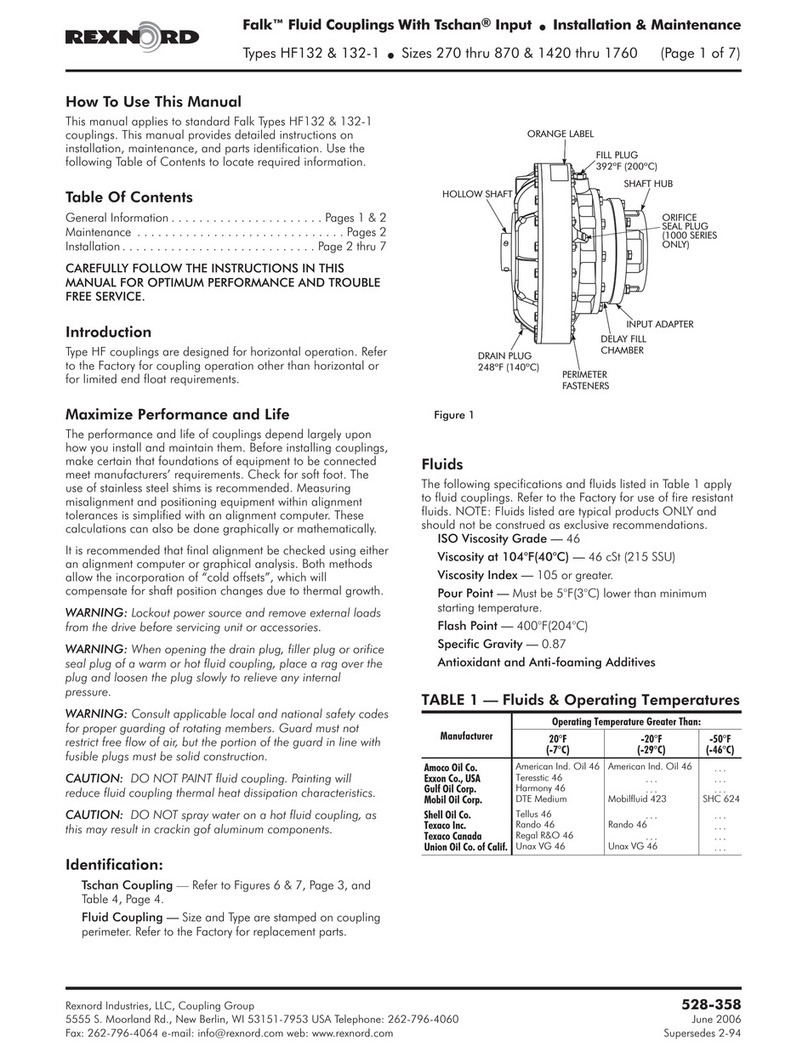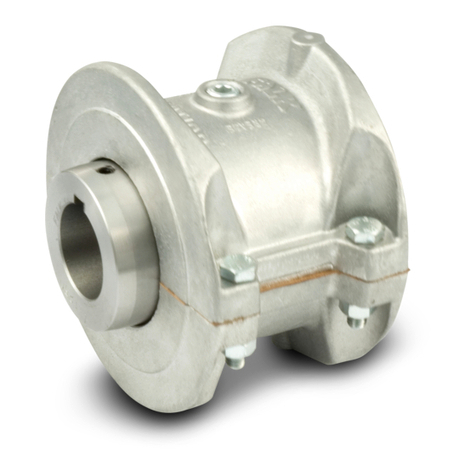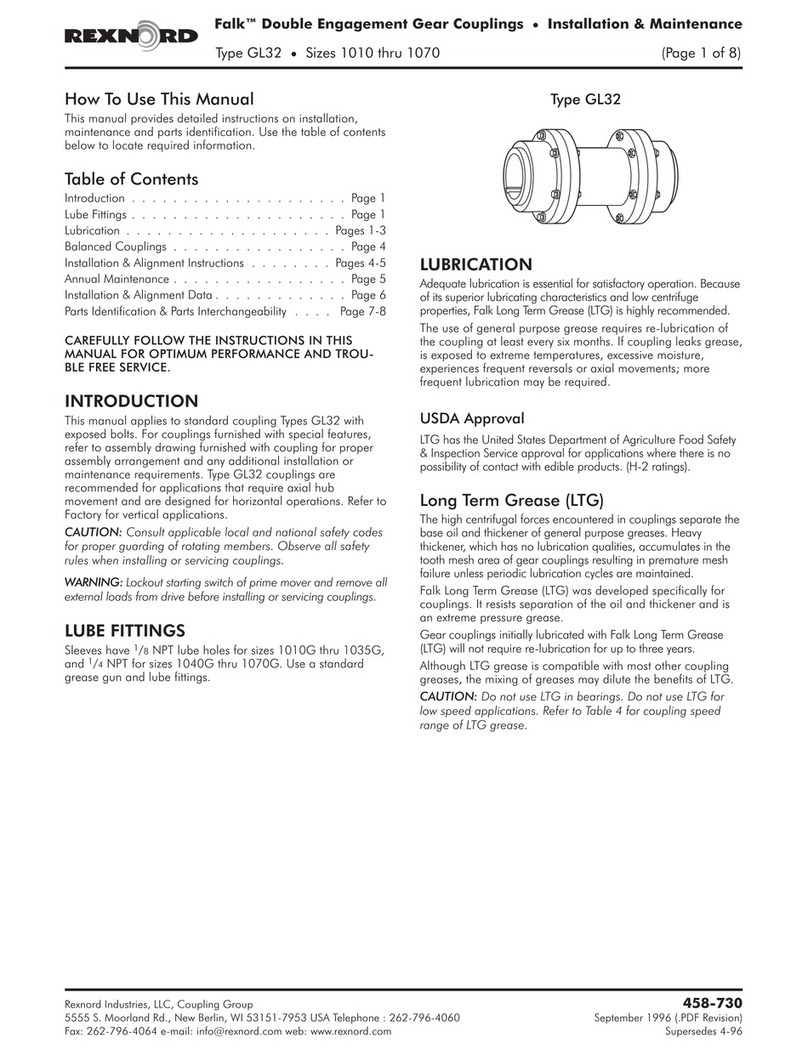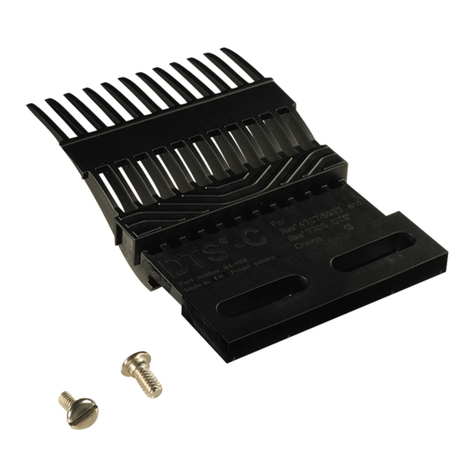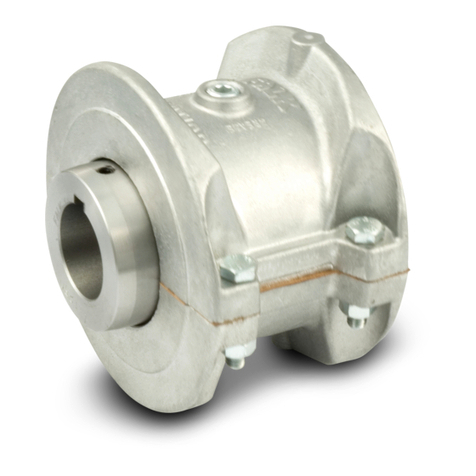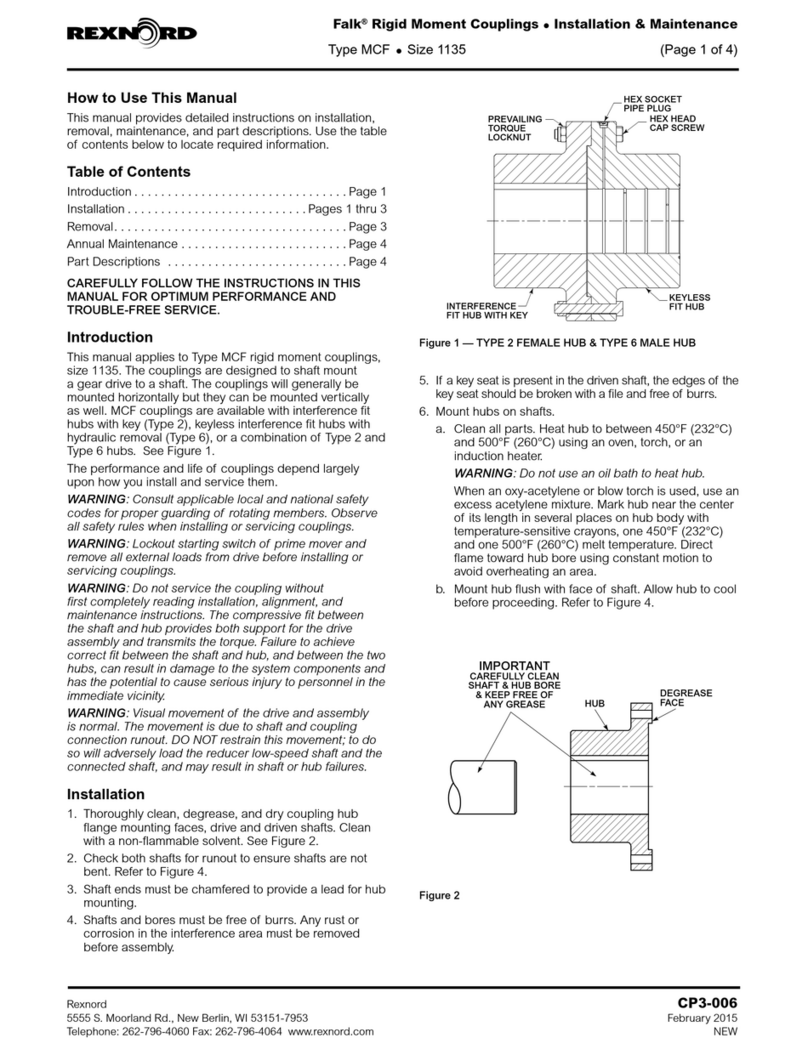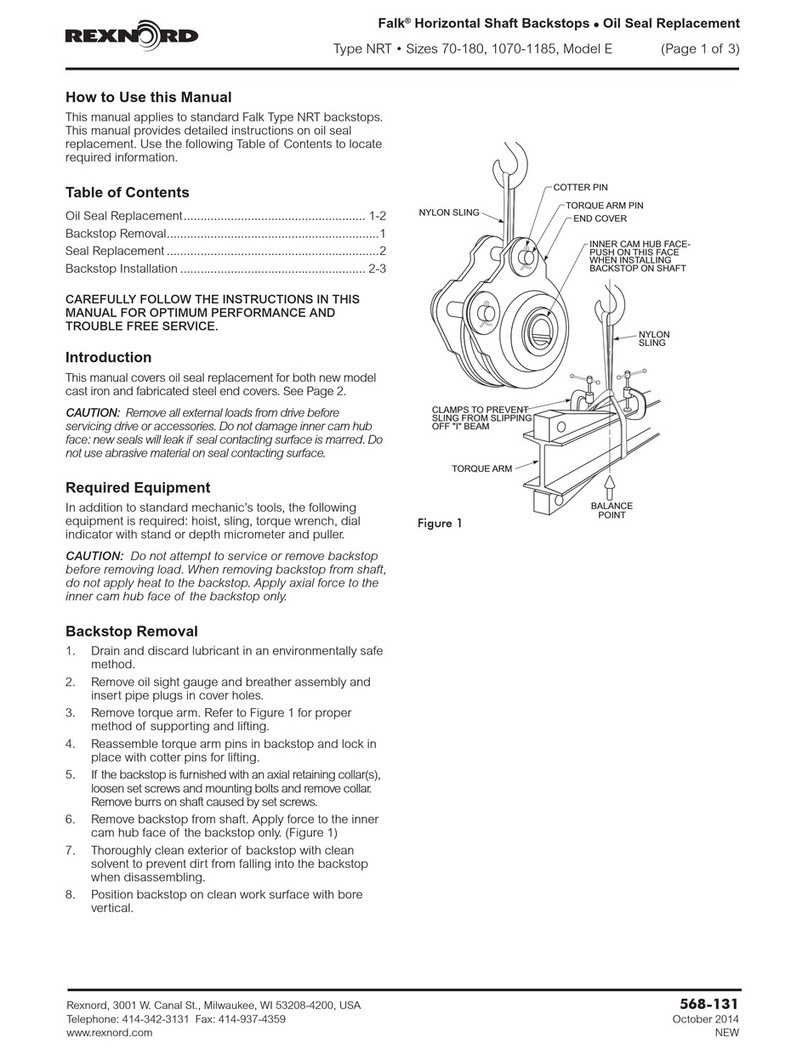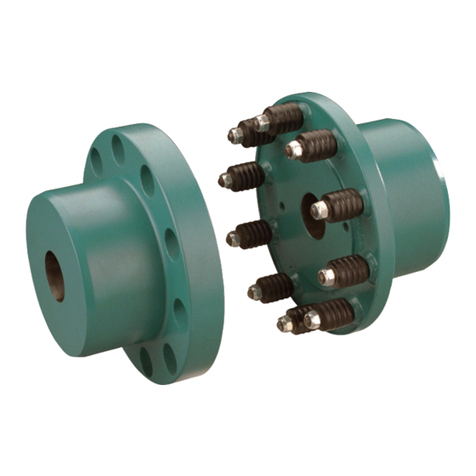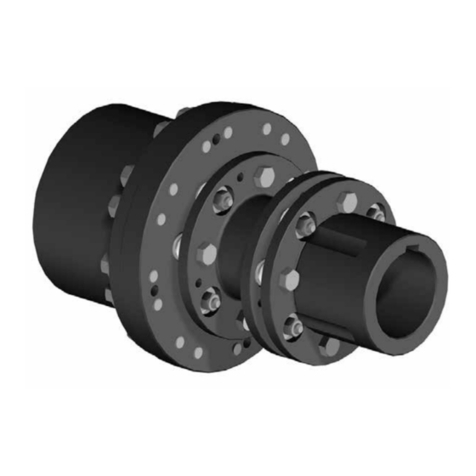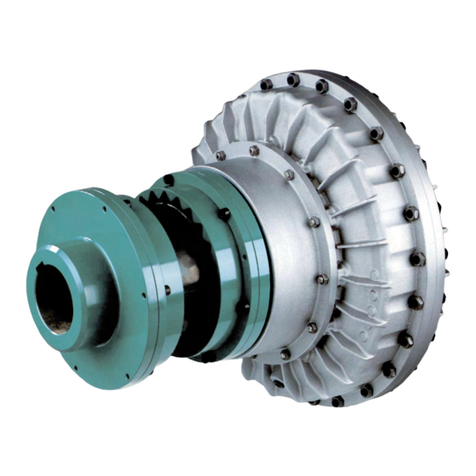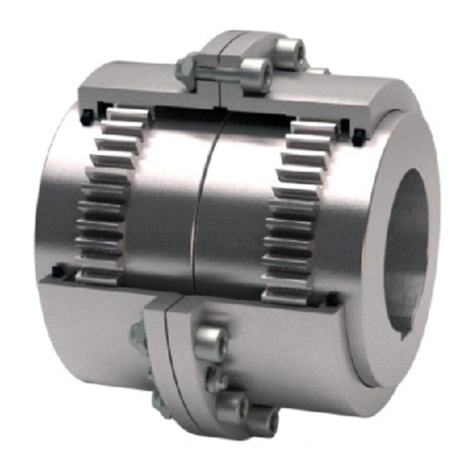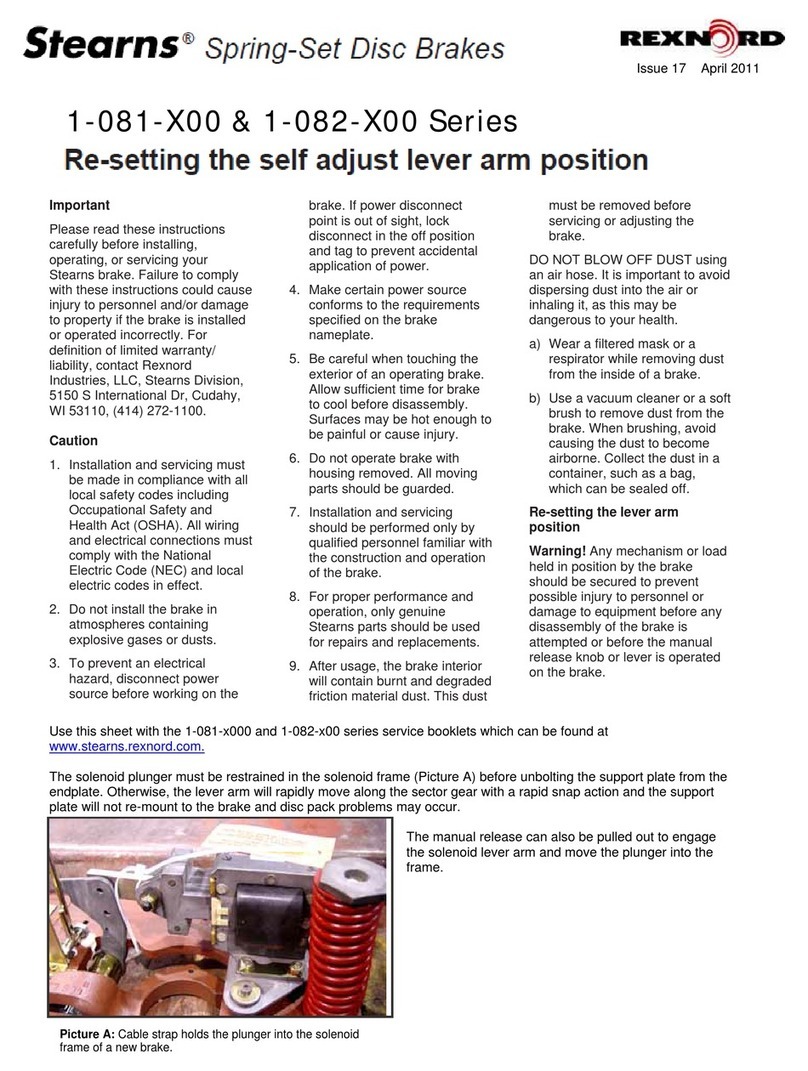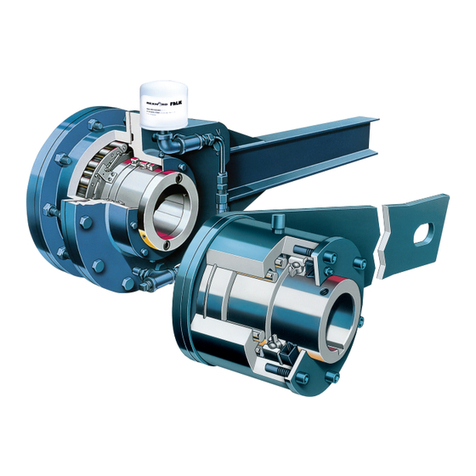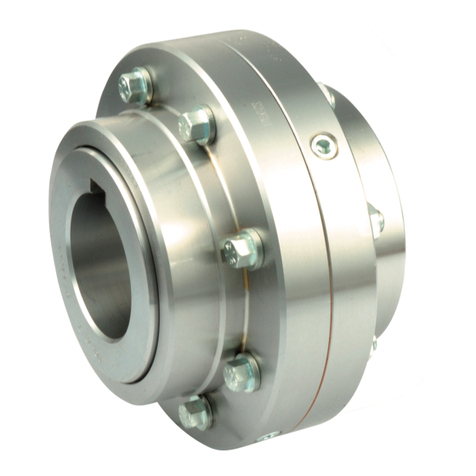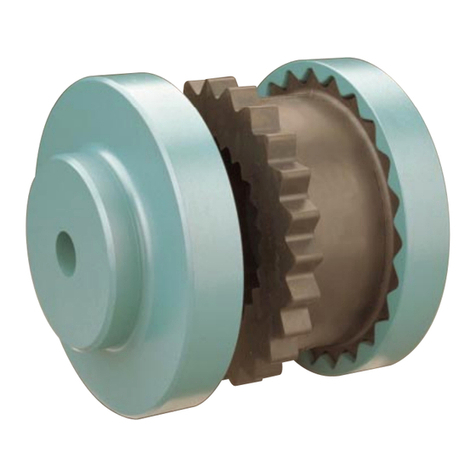
Installation and Maintenance •Rexnord®Thomas®Disc Couplings
(Page 2 of 4) Series 52 • Sizes 225-750 (Tpack)
538-212 Rexnord Industries, LLC, 5555 S. Moorland Rd., New Berlin, WI 53151-7953
November 2008 Telephone: 262-796-4060 Fax: 262-796-4064
Supersedes CP-Series 52-T, 8-06 e-mail: info@rexnord.com web: www.rexnord.com
Set the indicator to “0”. Remove the hub and
install the key(s). Heat the hub in an oil bath or
oven until the bore is sufficiently larger than the
shaft. 350°F is usually sufficient. An open flame
is not recommended. However, if flame heating is
necessary, use a very large rose bud tip to give
even heat distribution. A thermal heat stick will help
determine the hub temperature. DO NOT SPOT
HEAT THE HUB OR DISTORTION MAY OCCUR.
With the hub expanded, slide it quickly up the shaft
to the “0” set point. Continue to advance the hub
up the taper to the desired axial position. Use the
indicator as a guide only. A preset axial stop device
can be helpful. Check the final results with a depth
micrometer. Install the hub retention device to hold
the hub in place.
5. Shaft Alignment — Move equipment into place.
A. Soft Foot — The equipment must sit flat on its base.
Any soft foot must now be corrected.
B. Axial Spacing — The axial spacing of the shafts
should be positioned so that the disc packs (flexing
elements) are not distorted when the equipment
is running under normal operating conditions. This
means there is a minimal amount of waviness in the
disc pack when viewed from the side. This will result
in a flexing element that is centered and parallel
to its mating flange faces. Move the connected
equipment to accomplish the above. Refer to the
assembly drawing and the connected equipment
installation procedures for specific axial spacing
requirements.
NOTE: The disc pack is designed to an optimal
thickness and is not to be used for axial adjustments
by removing or adding individual discs.
As a guide, maximum and minimum values for
dimension “N” are given. These dimensions are
suggested for initial installation. Additional capacity
is available to compensate for thermal and structural
movement. Maximum axial capacity values for these
couplings are also given. See Table 1 and Figure 1.
NOTE: C=2N+Center Member Length.
C. Laser Alignment is an Option — If not available,
proceed with dial indicator method.
D. Angular Alignment — Rigidly mount a dial
indicator on one hub or shaft, reading the face of
the other hub flange, as shown in Figure 2. Rotate
both shafts together making sure the shaft axial
spacing remains constant. Adjust the equipment
by shimming and/or moving so that the indicator
reading is within the values shown in Table 1.
E. Parallel Offset — Rigidly mount a dial indicator
on one hub or shaft, reading the other hub flange
outside diameter, as shown in Figure 3. Compensate
for indicator set-up sag. Rotate both shafts together.
Adjust the equipment by shimming and/or moving so
that the indicator reading is within .001 inch per inch
of the axial length between flex elements.
NOTE: If the driver or driven equipment
alignment tolerances are more stringent than our
recommendations, the driver or driven equipment
tolerances should be used. Also, be sure to
compensate for thermal movement in the equipment.
The coupling is capable of approximately four times
above shaft alignment tolerances. However, close
alignment at installation will provide longer service
with smoother operation.
6. Final Assembly — With the coupling in good alignment,
the bolts should easily fit through the holes in the
flanges and the disc packs.
NOTE: All bolt threads should be lubricated. A clean
motor oil is recommended. Also, see Footnote below
Table 1.
A. If the coupling arrived assembled, the disc packs
are still attached to the center member assembly.
Remove the disc packs from the center member.
B. With the hubs mounted and the span length “C”
set, proceed to put the center member into place
between the two hubs. Care should be taken when
handling the center member as the tube can be
damaged. Support the center member at both ends
on wood blocks, with nylon straps from a hoist, or
some other convenient way. It may help to support
the end not being worked on with bolts through the
spool flange bolt holes. This will hold the parts in line
at that end.
C. Now install the disc pack. Rotate the hub or center
member so that the hub bolt holes line up with
the center member flange clearance holes. If the
coupling was assembly balanced, also align the
match marks. Start a bolt through a loose washer.
The radius side of the washer must always be
against the disc pack. Hold the disc pack in one
hand and slip it down between the two flanges so that
the bushing heads in the pack line up with the bolt
holes in the flanges as shown n Figure 1. Slide the
bolt and washer through the clearance hole in one
flange, into the bushing, and through the bolt hole of
the opposite flange. Make sure all parts pilot on the
body ground area of the bolt. Install a locknut onto
the bolt, but do not tighten it at this time.
Now pivot the pack around until it lines up the
bushing heads with the rest of the bolt holes. Place
a loose washer on each remaining bolt and install
the bolts through the clearance holes, into the
bushings, and through the bolt holes. The last bolt
may be tight and require some light tapping on the
head of the bolt to work it through the disc pack.
Install a locknut on each bolt. The locknuts can be
slightly tightened at this time. The disc pack, when
installed, should look centered and parallel with the
mating flanges.
